Five random summer wildflowers you can find in Indiana — and one of them is deadly
Since we're in the season for dazzling mid-summer blooms, I spoke with Indiana’s former and current state botanist about five random wildflowers. One is deadly. All five are curious and pretty.
The two men had to selectively pluck just 1,000 or so for the guide book they published in May, “Wildflowers of the Midwest” (600 pages, $29.95).
Scott Namestnik of North Liberty doesn’t like to pick favorites. As the current botanist in the Indiana Department of Natural Resources, he quickly points out why it’s important to have native plants in your yard.
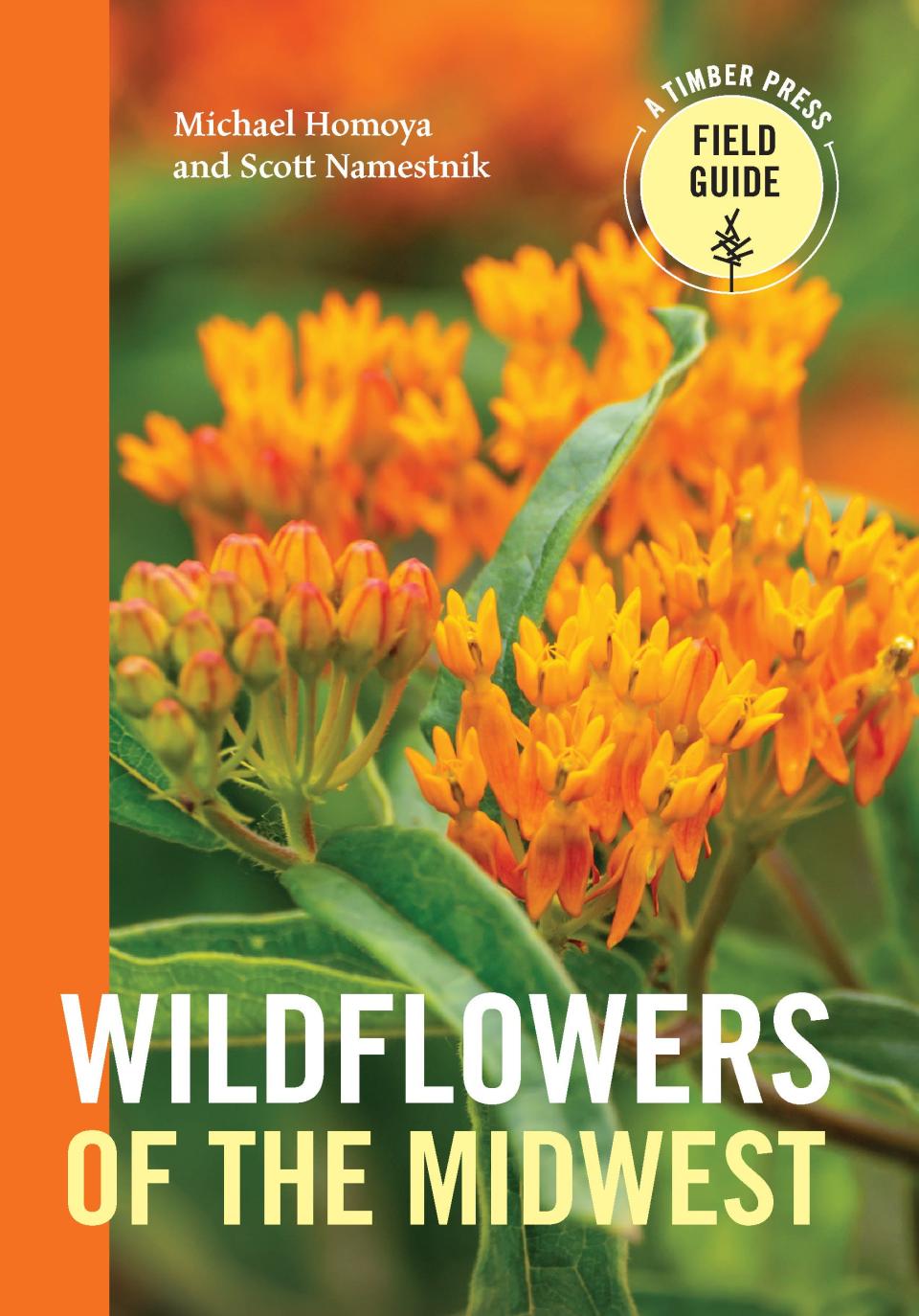
It's not about the plant itself, he says, but supporting the range of life that relies on it for food and habitat. Don’t fret, he says, if you see holes in your leaves from native insects that we need for crops and healthy ecosystems.
“We are losing some of them,” he says of native insects. Their habitat is being lost to invasive species and the development of green areas, he says, and it’s more than the people who work in conservation can overcome.
August 2019: Still in North Liberty, he's now Indiana's state botanist — minder of species
Michael Homoya of Brownsburg, the prior state botanist for 37 years, says publisher Timber Press in Oregon had asked him to write a guide book similar to ones it had printed for other regions. Homoya called on Namestnik’s help when, he says, “I realized this was a bigger animal than I could wrestle.”
Namestnik had contributed to another guide book that Homoya authored in 2012, “Wildflowers and Ferns of Indiana Forests.”
Homoya also wrote “Orchids of Indiana” but is especially proud of a colorful book for young readers about native spring plants, “Wake Up, Woods,” which he created in 2019 with illustrator Gillian Harris and poet Shane Gibson.
In the newest book, Homoya says, they tried to pick flowers you’re “likely to see regardless of what state you’re in; it didn’t always work.”
Beginner and intermediate flower fans should find it useful. Flowers are organized by their color, making it easier to thumb through the many photos to identify a bloom, but also by their families.
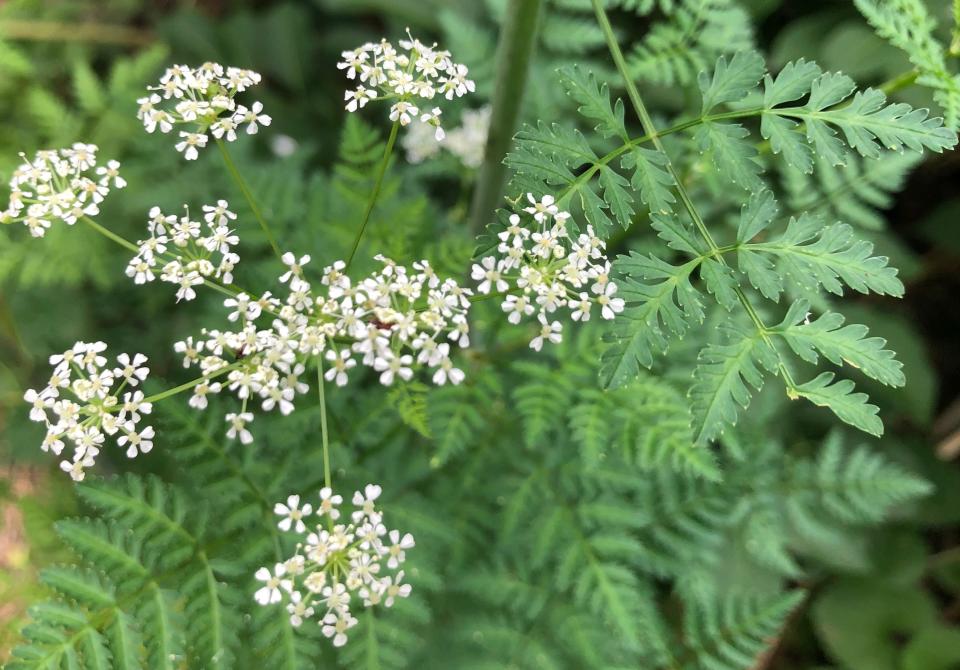
Poison hemlock
A couple of readers wrote to me this spring, raising alarms about local patches of poison hemlock in public places and yards. Its lacy leaves look like those of a carrot or parsley. In fact, it’s a member of the carrot family. But this species is deadly if you eat it.
By now, the plants can be six feet tall. But it does also look a lot like another tall member of the carrot family: the also-invasive Queen Anne’s lace. Both have crowns of small, white flowers. The key difference is that poison hemlock has purple spots on its stem.
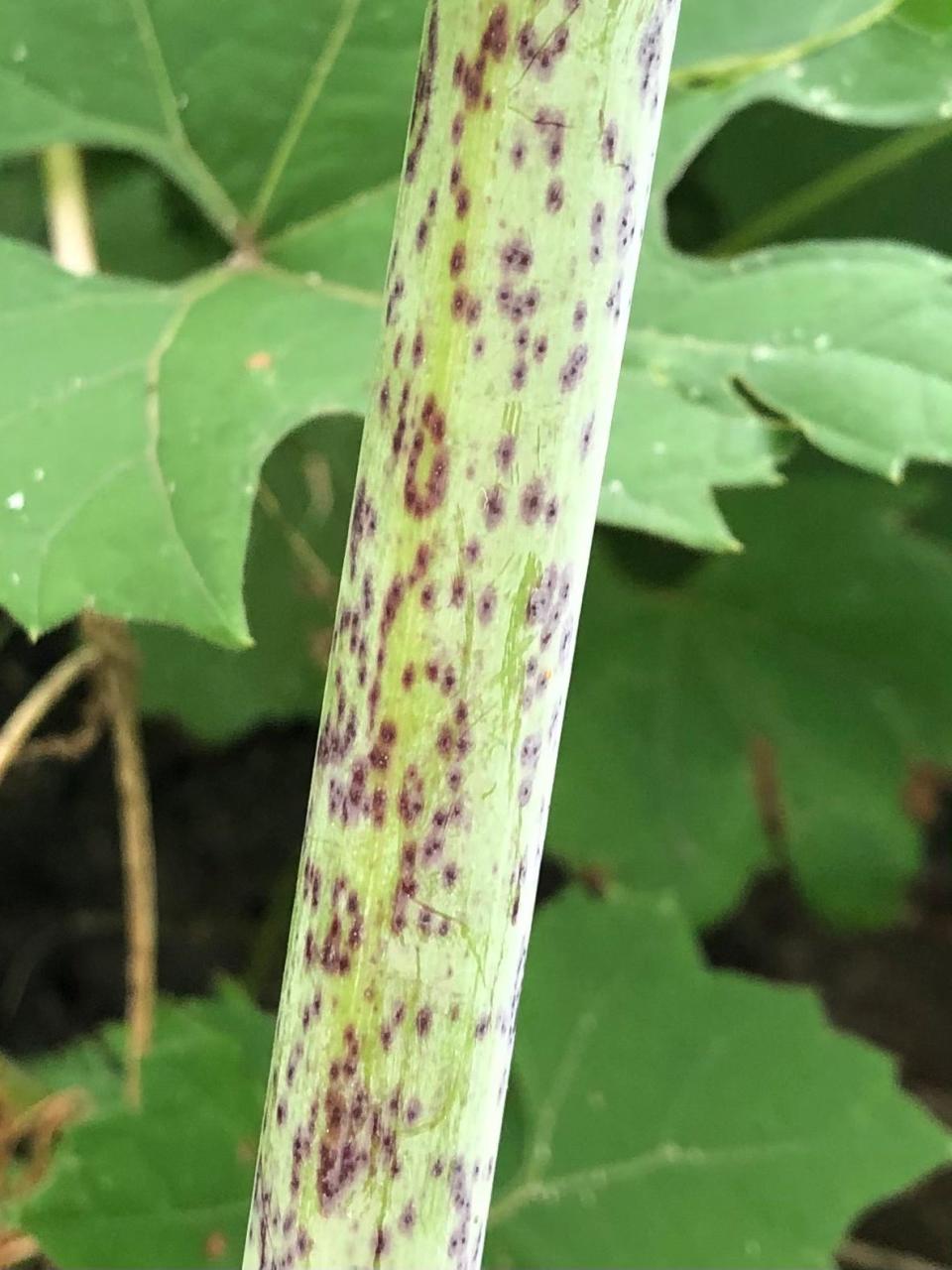
Pets and livestock also can be sickened if they eat large quantities of poison hemlock.
A person’s skin can blister up if it’s in contact with the leaves or sap from the plant, similar to poison ivy. Namestnik says other members of the carrot family can irritate the skin, too, though he has never reacted to them.
Poison hemlock is non-native and has been progressively spreading in recent years, the botanists say. Some Indiana experts are concerned. So far, Namestnik says, it has spread along roadsides and other disturbed areas and, luckily for now, not into natural areas with native plants and ecosystems.
He says he’s fielded a lot of calls lately from people who want to safely remove poison hemlock. His advice is the usual for caustic plants: Wear gloves and long sleeves. Wear eye protection. Other experts advise against mowing or using weed whackers on the plant, because that can liberate seeds and toxic sap into the air.
It spreads through tiny seeds that it drops after it flowers.
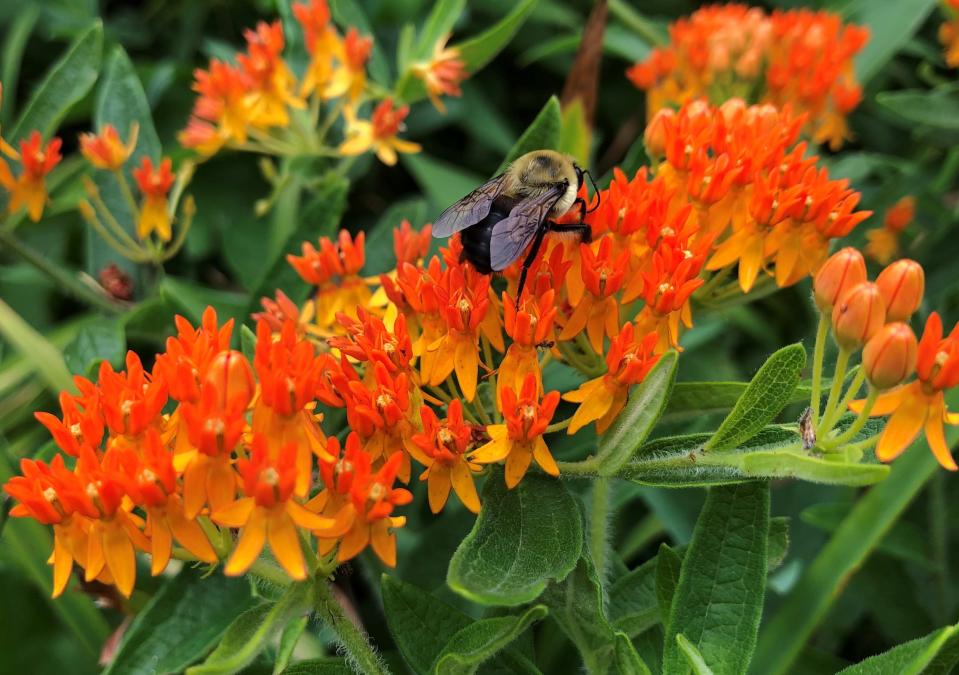
Butterfly milkweed
Common milkweed has begun blooming with its round clusters of pink flowers, a plant that's vital to the survival of monarch butterflies, along with bees and other pollinating insects.
Like usual, the red-and-black native milkweed beetles are crawling over the milkweed in my yard as they play their own role in the ecosystem. These harmless insects may chomp on roots or leaves, but they’re not destructive and don't harm butterflies.
Homoya notes a more distinct species, butterfly milkweed, that dazzles with bright orange flowers. This summer bloomer is less common, often appearing in a wild field by itself or just in a small group.
“It’s a beautiful flower,” he rightly says.
Members of the Indiana Native Plant Society voted to name it 2022’s native plant of the year.
Butterfly milkweed is more bushy and branched out than common milkweed, which typically has a single tall stem with broad leaves. Although it belongs to the same family and genus, Homoya says, butterfly milkweed lacks the milky sap that inspired the name. But, just as with common milkweed, monarch caterpillars will feed on its leaves and plant their eggs there.
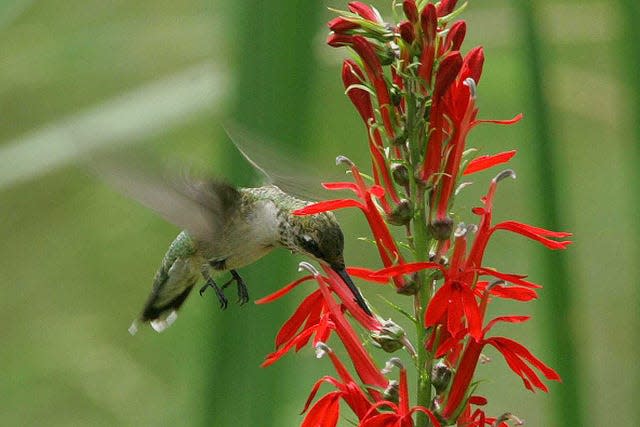
Cardinal flower
Homoya also likes the brilliant red, showy flowers of the cardinal flower.
“Few if any Indiana wildflowers have such vividly scarlet flowers as cardinal flower,” he wrote in his “Wildflowers and Ferns” book.
The book further states that the name “cardinal” for both this flower and Indiana’s state bird, the northern cardinal, comes from the color of hats and robes worn by cardinals in the Roman Catholic Church.
Ruby-throated hummingbirds are the primary ones who pollinate this flower, which tends to grow near river and stream banks and swampy areas. It grows two to three feet tall with leaves that are three to five inches long and shaped like a lance or narrow oval. The flowers have two upper lobes and three lower lobes.
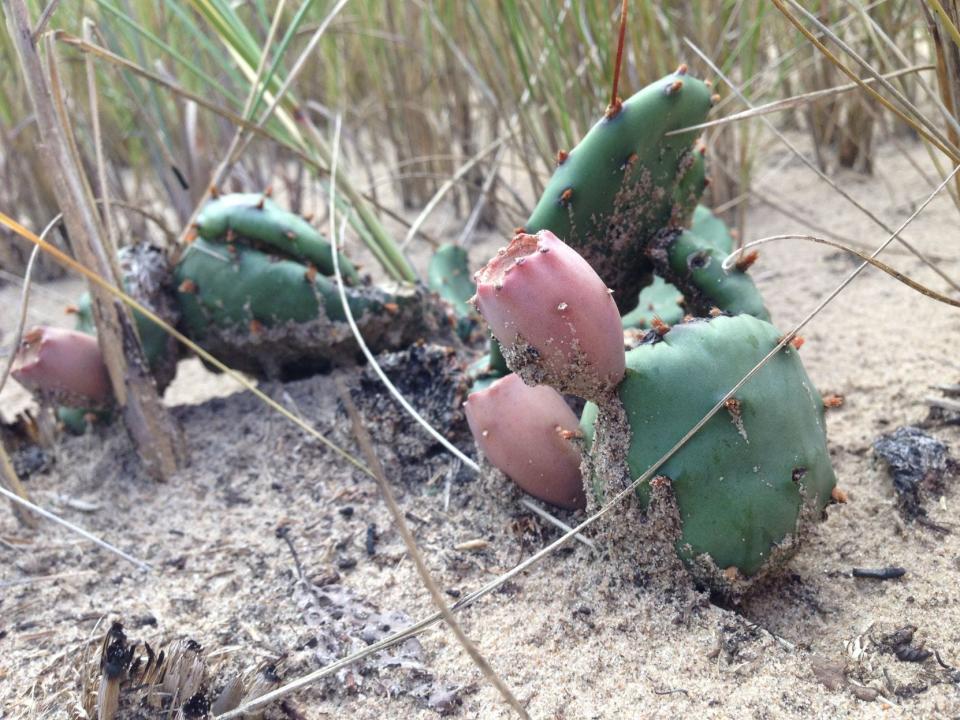
Prickly pear cactus
Our only locally native cactus, prickly pear cactus, grows in the Indiana Dunes and other places where it can find sandy soils, along with dry rocky terrain in the west central and deep southern parts of the state, Homoya says.
It has the widest range of all cacti in the U.S., appearing naturally from New Mexico to Florida to Massachusetts, according to the U.S. Fish & Wildlife Service.
Folks from Latin America prize its leaves as food (with needles removed), called "nopales," as well as the round red fruit that it sprouts, or "tuna" in Spanish, that is ground up for salsa.
People who plant and grow it locally realize that it spreads really well. One curiosity: Its leaves shrink and leave a wrinkled skin in winter, then fill out to a smooth surface by spring. Its moisture-rich leaves survive winter thanks to an antifreeze in its cells.
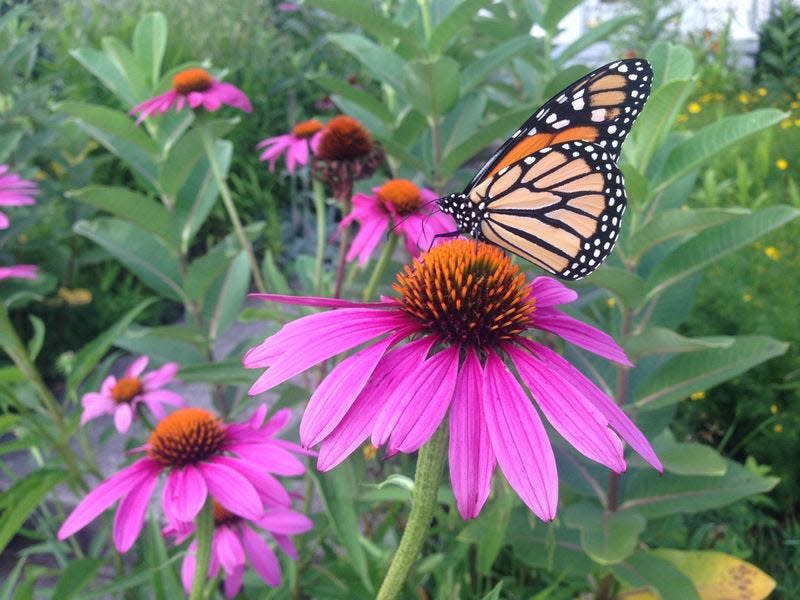
Purple coneflower
Many of us prize the purple coneflower as a native plant. But, actually, its truly native range is to the southwest of us — in Illinois, Namestnik says.
“It was not, at the time of settlement, in our very local region,” he says.
Not that there’s anything wrong with the native seed mixes, often planted locally, that include purple coneflower. It’s very useful to native insects. Butterflies love it. There are a couple of additional varieties, including broad-leaved and pale purple coneflowers.
Also in this column: Bike co-op moves and ways to inspire or be inspired by native plants
Find columnist Joseph Dits on Facebook at SBTOutdoorAdventures or 574-235-6158 or jdits@sbtinfo.com.
This article originally appeared on South Bend Tribune: Midwest wildflowers in book by Indiana botanists Homoya and Namestnik

